Armored vehicles "Spartak"
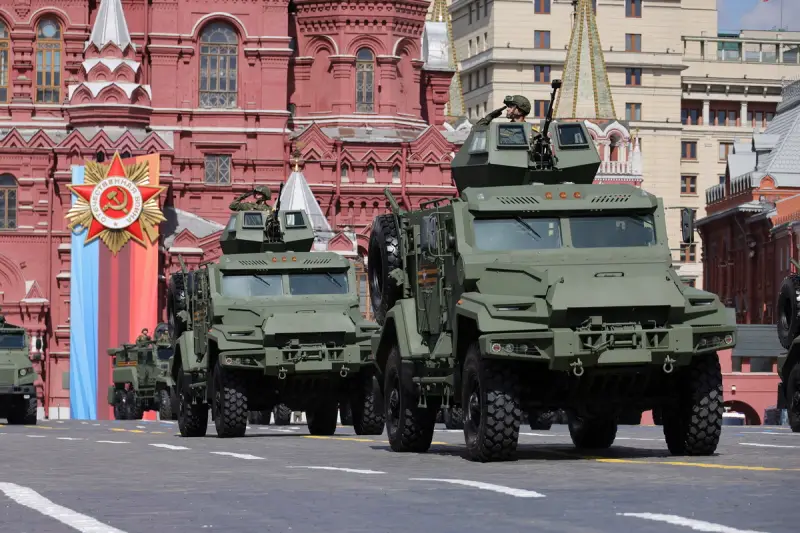
Armored cars "VPK-Ural" at the parade, May 9, 2023. Photo of the Russian Ministry of Defense
The Russian defense industry offers the armed forces and other government agencies a number of different armored vehicles with various features. One of the latest innovations in this area is the Spartak armored car, developed by the Military Industrial Company. It is built on the basis of available components and shows high tactical and technical characteristics. In addition, the design has potential for development and modernization.
New line
In the recent past, the Moscow Military-Industrial Company developed and presented a “multi-purpose vehicle” AMN-590951, also called “VPK-Ural”. It was a two-axle armored car capable of carrying up to nine people and supporting them with fire. As far as we know, this vehicle was tested and delivered to Russian army units.
In August 2022, at the international military-technical forum "Army", an updated version of the VPK-Ural armored car with the same index and new name "Spartak" was demonstrated for the first time. The new vehicle differed from the basic model in the design of its armored hull and additional protection for individual elements.
Just a few months later, in November, it became known that AMN-590951 armored vehicles were used during the Special Operation to protect Donbass. According to media reports citing sources in the army, VPK-Ural vehicles with additional protection are in operation. Perhaps they were talking about the newer Spartak. Details of operation and combat use were not reported.
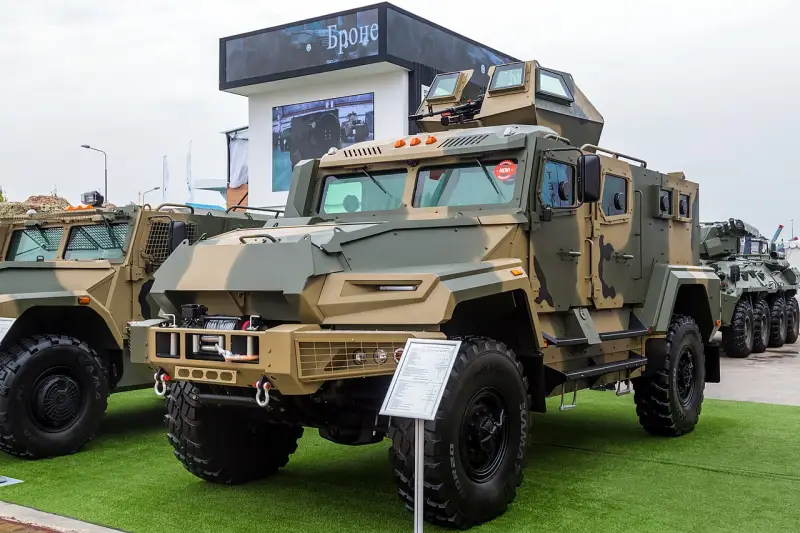
Two-axle "Spartak" at the Army-2022 forum. Photo: Wikimedia Commons
In March 2023, the Spartak armored car became an exhibit at the specialized exhibition “Expotechnoguard-2023”. Interestingly, this time the car was demonstrated not in camouflage, but in the gray color of the Russian Guard. Probably, they wanted to show the possibility of using new equipment not only in the armed forces.
Soon, armored cars "VPK-Ural" and/or "Spartak" took part in parades on the occasion of Victory Day for the first time. Such equipment and other modern armored cars were shown to the public in several cities at once.
For the Army 2023 forum, the development company has prepared another new product, also named “Spartak” and indexed AMN-59097. It was a three-axle vehicle with a loading platform, based on the units of an existing armored car. As a payload, the exhibition model received an artillery mount with a 57-mm automatic cannon. In this case, installation of other equipment is possible.
On finished units
Armored cars of the VPK-Ural / Spartak series differ significantly from each other in appearance and design, but have a lot of common features and are maximally unified. At the same time, they are built with extensive use of components from commercial vehicles of the Ural brand, which should reduce the cost and labor intensity of production, as well as simplify the operation of serial equipment.
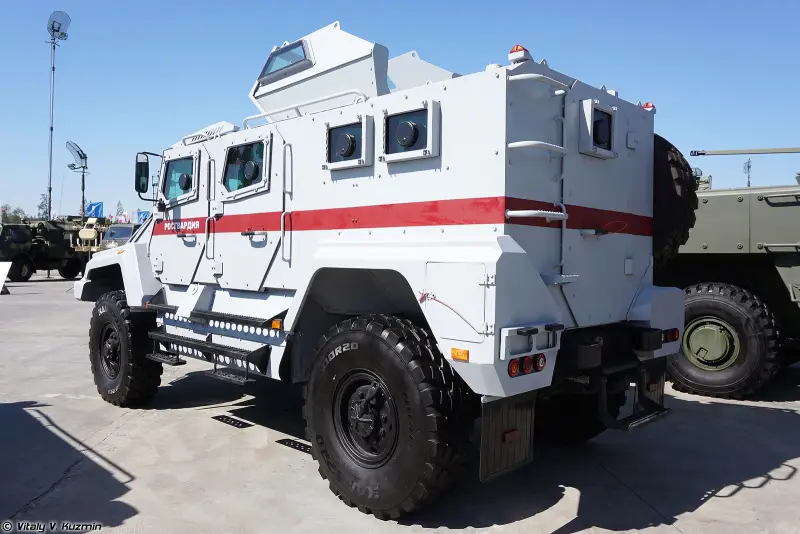
"Spartak" in the colors of the Russian Guard. Photo Vitalykuzmin.net
The first version of Spartak, shown in 2022, is a two-axle armored vehicle with a monocoque body and an all-wheel drive chassis. The length of the vehicle reaches 6,5 m with a width of 2,5 m and a height (on the roof) of 2,8 m. The curb weight is 14,5 tons.
A welded armored hull with an engine compartment and a total volume to accommodate the crew and passengers is used. Some of the hull units are covered with additional armor sheets. The frontal projection of the habitable compartment of the hull is protected from 14,5 mm bullets; other projections can withstand fire from 12,7 mm systems. The engine compartment and chassis components are protected against armor-piercing incendiary 7,62 mm bullets. Mine protection is provided in the form of an armored V-shaped bottom. Resistance to explosion of 8 kg of TNT under a wheel or body is declared.
The armored car is equipped with a turbocharged diesel engine producing 312 hp. and a 5-speed manual transmission. The transmission distributes torque to all wheels. The maximum speed on the highway reaches 100 km/h, the range is 1000 km. The machine is capable of climbing a 400 mm wall and overcoming other obstacles. Water obstacles are crossed only by fords.
The habitable compartment of the hull accommodates 10 seats. In its front part, there are two rows of seats for the driver and three passengers, facing forward in the direction of travel. Access to these places is provided by its own doors in the sides. Six more seats are installed in the stern along the sides; boarding is carried out through the stern door.
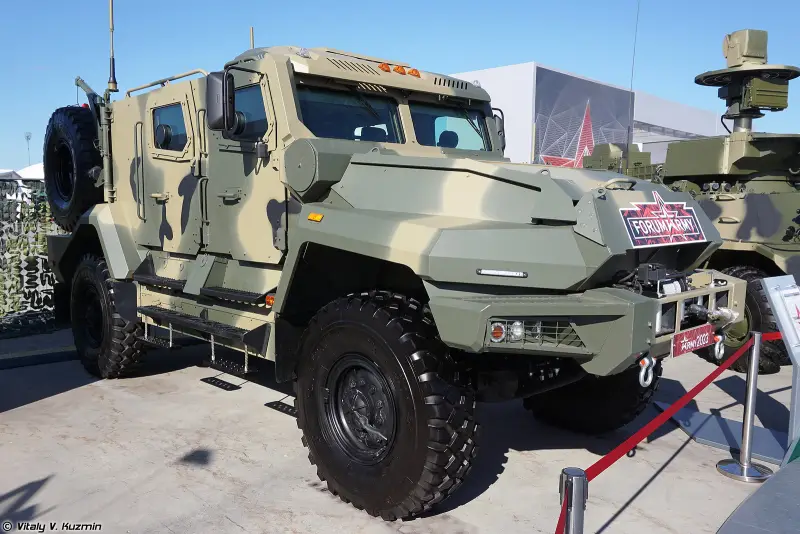
Armored car with the Tablet-M-IR artillery control system. Photo Vitalykusmin.net
There is a hatch on the roof of the hull with a seat for weapons. It is proposed to install a protected turret under a machine gun, equipped with bulletproof armor and glazing. Installation of other devices is possible, incl. remotely controlled modules. Embrasures are installed in the side glazing for personal use. weapons crew and troops.
The Spartak version shown last year with the AMN-59097 index is distinguished by an extended chassis and the presence of a third drive axle. The front hull compartments with the engine compartment and a four-seat double-row cabin have been preserved. Instead of a rear volume with seats, a platform was installed to accommodate add-ons or cargo. The engine and gearbox remained the same, but the transmission added a third axle drive.
The three-axle AMN-59097 grew heavier to 22,5 tons. The increase in weight while maintaining a 312-horsepower engine led to a slight deterioration in mobility. However, mobility and maneuverability on off-road and rough terrain remained at an acceptable level.
"Spartak" on an extended chassis can serve as a truck or a weapons carrier. Thus, the prototype for Army 2023 was equipped with an AZP-57 artillery mount with an S-60 automatic cannon of 57 mm caliber. The gun is serviced by a crew of 3-4 people working on a loading platform. They are protected from fire from the front corners by the standard shield cover of the installation. Ammunition - 144 rounds in 36 clips for quick loading.
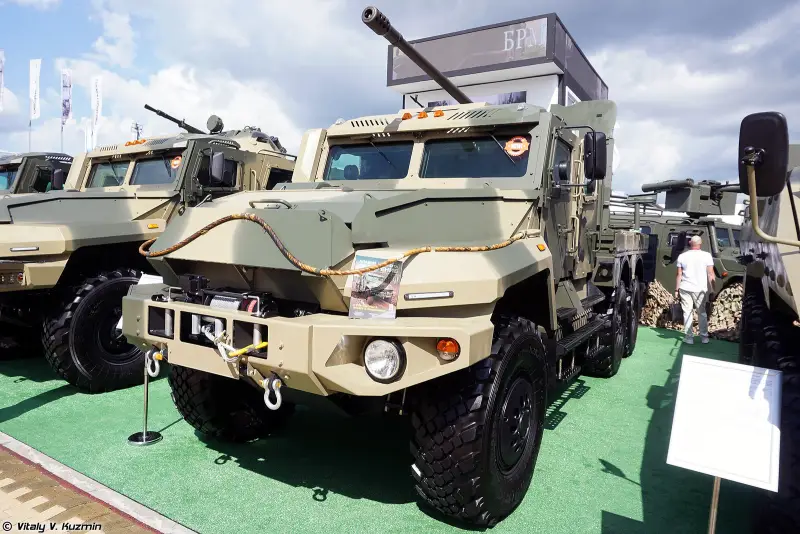
AMN-59097 at Army-2023. Photo Vitalykuzmin.net
Visible benefits
During its existence, the Military-Industrial Company has developed a large number of armored vehicles for various purposes, and some of these vehicles have reached series production and adoption. The latest developments in this area were the VPK-Ural and Spartak armored vehicles in different versions and modifications.
In general, the products of the Spartak series have several positive features that can interest a potential customer. Armored cars should be relatively simple to manufacture and operate, as well as effective in terms of use for various tasks.
The main advantage of the Spartak and VPK-Ural projects should be considered the widespread use of ready-made units and components borrowed from commercial automotive equipment. With all the advantages of production and operational nature, such units provide the required level of technical characteristics. In addition, two vehicles with different chassis and operating parameters were built on the same base.
The first version of the VPK-Ural product received bulletproof and anti-fragmentation protection at the level of other modern armored cars. The next Spartak project involves restructuring the hull and increasing the level of protection, both ballistic and mine-resistant. At the same time, the safety of not only the crew, but also vital units is increased.
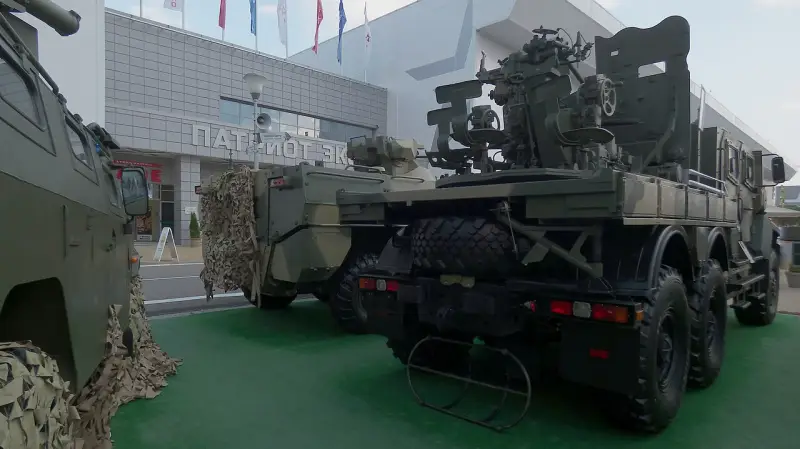
Three-axle "Spartak" with a 57-mm cannon, rear view. Photo: Wikimedia Commons
“Spartak” is capable of solving various problems. In its basic version, it is a protected transport for personnel with fire support capabilities. It is also possible to install special equipment of suitable dimensions. For example, an armored car-artillery command post has already been shown. The three-axle “cargo” modification can carry heavier loads, including artillery systems.
As far as we know, the AMN-590951 “VPK-Ural” armored vehicle has already reached the troops and is even being used in the Special Operation zone. Positive experience in its operation may influence the Ministry of Defense’s interest in the next armored vehicles of this series and lead to the start of their production. In addition, positive results of the application will be good advertising for the promotion of armored cars on the international market.
Choice and competition
To date, the Russian defense industry has well mastered the development and construction of armored vehicles. New samples of this class with certain features are regularly demonstrated. Moscow "VPK" is one of the leaders in this direction, and in 2022-23. once again presented interesting and promising developments.
All versions of the newly developed Spartak have strong points and can find their place in the army or law enforcement agencies. However, to do this they will have to bypass similar developments from other manufacturers, the number of which is constantly growing. Whether they can cope with such competition, time will tell.
Information